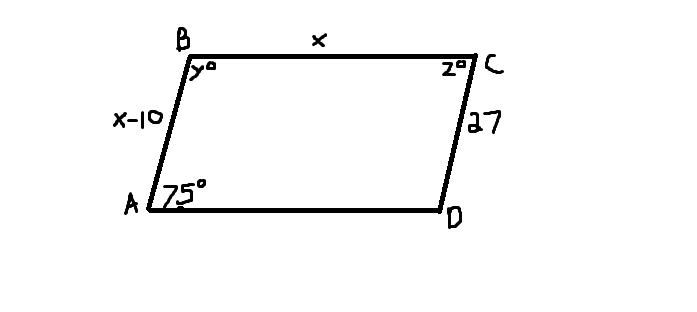
Given a right triangle ABC with hypotenuse AC, construct a circle Ω whose diameter is AC. And so O is center of the circumscribing circle, and the hypotenuse of the triangle ( AC) is a diameter of the circle.Īlternate proof of the converse using geometry Then the point O, by the second fact above, is equidistant from A, B, and C. Let O be the point of intersection of the diagonals AC and BD.

Since in a parallelogram adjacent angles are supplementary (add to 180°) and ∠ABC is a right angle (90°) then angles ∠BAD, ∠BCD, and ∠ADC are also right (90°) consequently ABCD is a rectangle. The quadrilateral ABCD forms a parallelogram by construction (as opposite sides are parallel). Let D be the point of intersection of lines r and s (Note that it has not been proven that D lies on the circle) Let there be a right angle ∠ABC, r a line parallel to BC passing by A and s a line parallel to AB passing by C.

The three internal angles of the ∆ABC triangle are α, ( α + β), and β. Since OA = OB = OC, ∆OBA and ∆OBC are isosceles triangles, and by the equality of the base angles of an isosceles triangle, ∠OBC = ∠OCB and ∠OBA = ∠OAB.

The following facts are used: the sum of the angles in a triangle is equal to 180 ° and the base angles of an isosceles triangle are equal. The theorem is named after Thales because he was said by ancient sources to have been the first to prove the theorem, using his own results that the base angles of an isosceles triangle are equal, and that the sum of angles of a triangle is equal to a straight angle (180°).ĭante's Paradiso (canto 13, lines 101–102) refers to Thales's theorem in the course of a speech. It is believed that Thales learned that an angle inscribed in a semicircle is a right angle during his travels to Babylon. Reference to Thales was made by Proclus, and by Diogenes Laërtius documenting Pamphila's statement that Thales "was the first to inscribe in a circle a right-angle triangle".īabylonian mathematicians knew this for special cases before Thales proved it. Attribution did tend to occur at a later time.

Work done in ancient Greece tended to be attributed to men of wisdom without respect to all the individuals involved in any particular intellectual constructions this is true of Pythagoras especially. There is nothing extant of the writing of Thales. – English translation by Henry Wadsworth Longfellow – Dante's Paradiso, Canto 13, lines 100–102


 0 kommentar(er)
0 kommentar(er)
